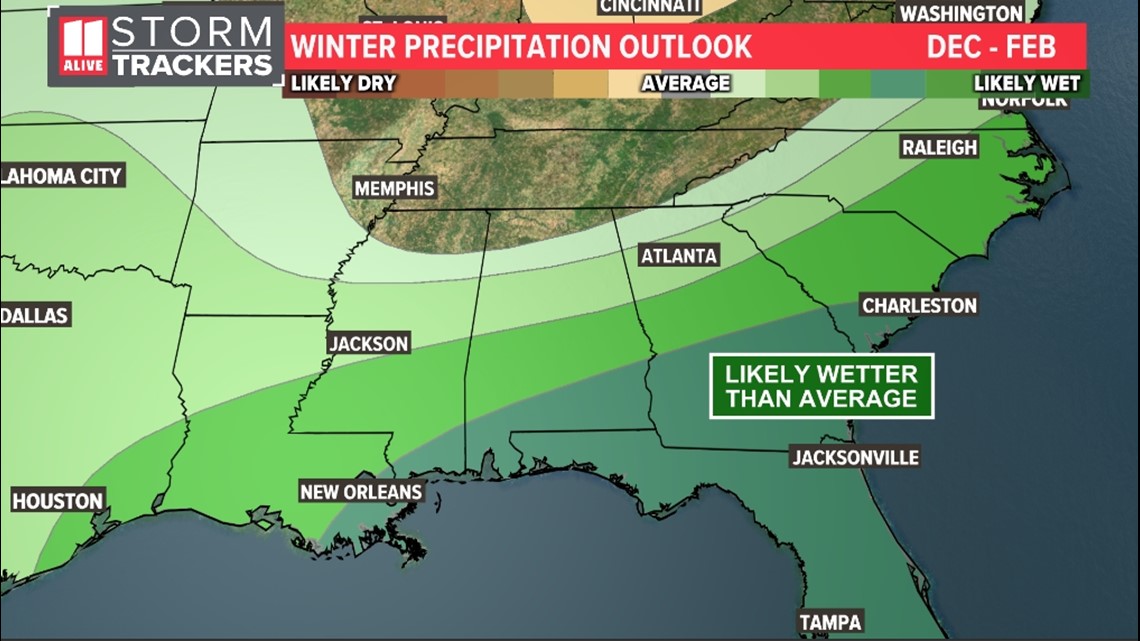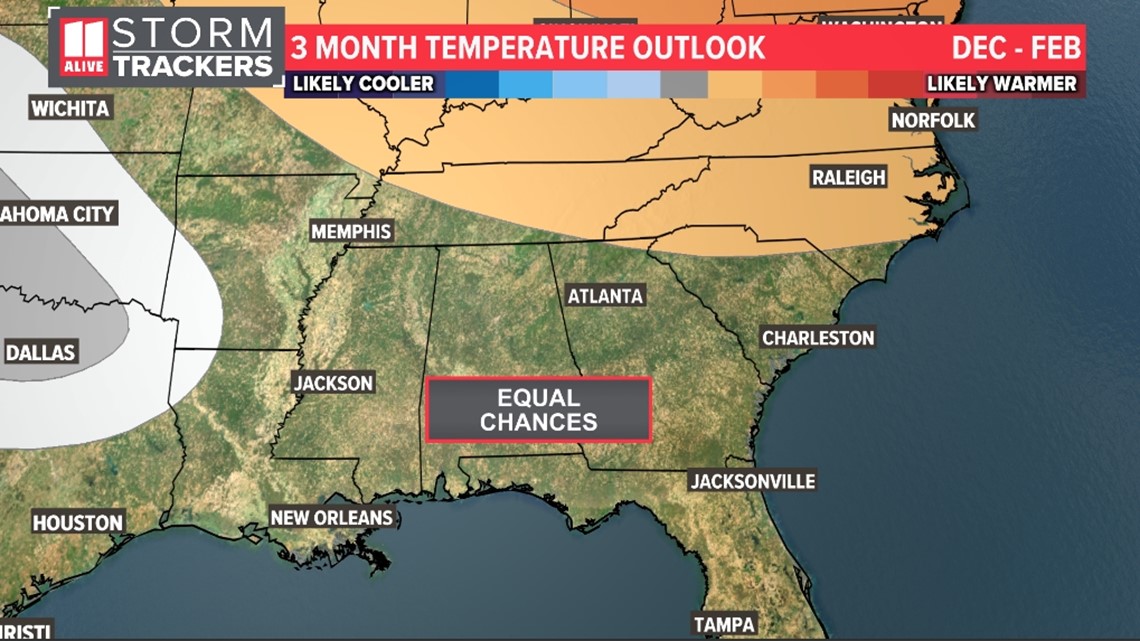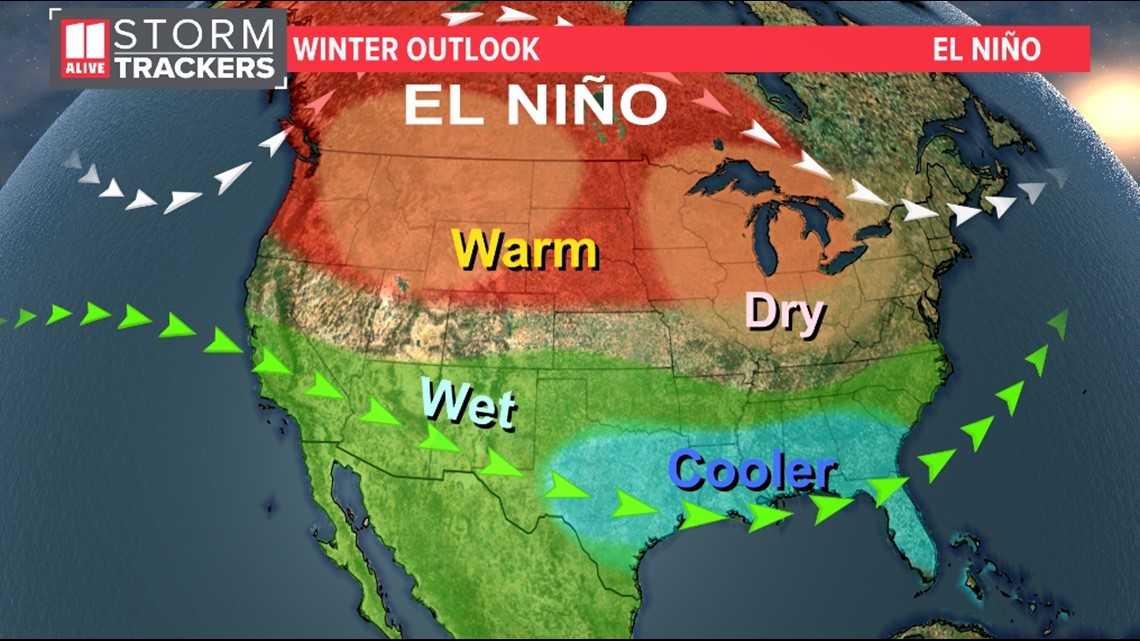ATLANTA — NOAA meteorologists announced Wednesday morning that we could have wetter weather this winter in the southeast. Long range forecasting takes many things into account for the months of December, January and February.
However, meteorologists can't be specific on snow or rainfall amounts or specific temperatures. What they can look at are trends that would make conditions either wetter or drier, or warmer or cooler throughout the long term period.
Here's a look at rainfall outlook for December, January and February.


Here's a look at the temperature outlook for December, January and February.


Even though NOAA predicts "equal chances" for above or below average temperatures, the 11Alive StormTrackers think out winter months will be cooler than average. One of the main contributing factors is that this winter is expected to be an El Niño winter. El Niño occurs when waters in the equatorial region of the Pacific Ocean off the coast of South America get warmer than average.


That warmer water can disrupt the upper flow and send impacts into the United States. That flow dictates surges of cooler air in some areas as well as transporting more moisture into some regions. That impacts temperatures at the surface and the amount of rain that can fall.


In a typical El Niño winter, the southeast gets cooler and wetter winters. Warmer and drier conditions are more common in the northern parts of the United States.


But not all El Niños are alike. This year's El Niño is showing signs that would favor below average temperatures and above average rainfall. But that doesn't mean it's going to be cold and rainy everyday. It just means on average, our winter will balance out a little cooler and wetter than average.
It still doesn't mean it's a guarantee for snow in Georgia, but chances are higher that some cold surges could overlap with a higher quantity of rain days to potential give us some winter precipitation.

